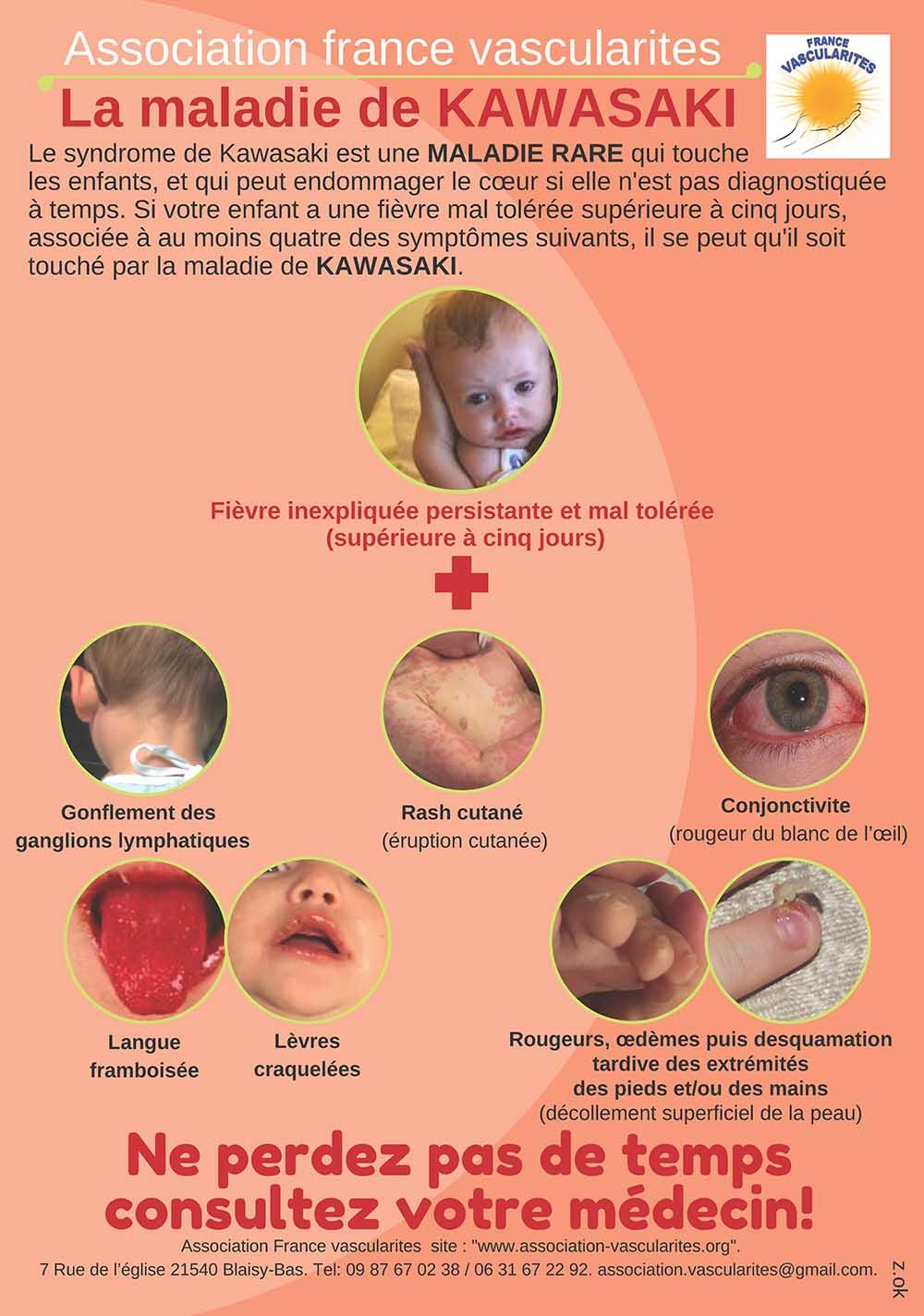
Kawasaki syndrome: symptoms, treatments, is it a serious disease?
Kawasaki disease, also called Kawasaki syndrome, takes its name from the Japanese pediatrician Tomisaku Kawasaki who identified it for the first time in 1967. It most often affects infants and children from 1 to 8 years, with a peak incidence between 18 and 24 months. It is a vasculitis of the medium-sized arteries, especially the coronary arteries that supply the heart. It is the leading cause of acquired heart disease in children in industrialized countries.
What are the symptoms of Kawasaki disease?
The disease progresses in stages. A high fever (above 39°C) that lasts at least 5 days and does not go down with antipyretics or antibiotics, is the first sign of the disease. During this phase, the child's eyes turn red. This fever can be accompanied by stomach aches, irritability or even headaches. After 5 days, a rash in the form of red spots appears on the trunk, mucous membranes (vagina, mouth), genitals and buttocks. It may be reminiscent of hives or the characteristic rash of measles or scarlet fever. The child also has a red throat, a tongue pitted with small red dots (we speak of a “raspberry” tongue), chapped and red lips. The soles of the feet and the palms of the hands are red or purplish with possible swelling of the hands and feet. Desquamation (peeling skin) is observed on the fingers and feet about 10 days after the onset of the disease. The disease also causes swelling and tenderness of the lymph nodes in the neck.
Patients with Kawasaki syndrome do not always have all of these symptoms.

What are the causes of Kawasaki syndrome?
The causes of this disease remain unknown to this day. But several hypotheses have been proposed to explain its appearance:
How to diagnose the disease?
The clinical examination makes it possible to make the diagnosis. The disease can be fully identified by the presence of fever and 4 symptoms out of 5 standard clinical criteria (limb disease, rash, red eyes, lip and mouth disease, swollen lymph nodes). We speak of incomplete disease if the patient has a fever and presents 2 to 3 of the standard clinical criteria and signs of coronary artery disease. If the diagnosis is confirmed, the patient should do a cardiac ultrasound to see if the heart is involved.
Diagnosing Kawasaki disease is difficult because the symptoms are common to other illnesses, infections, and drug intoxications.
What are the treatments for Kawasaki disease?
Treatment should be started as soon as possible to avoid complications. It is based on the intravenous injection of a high dose of immunoglobulins (IVIg) and the administration of aspirin orally for 1 to 4 days. The doses are reduced as the patient's condition improves. Early management (within 10 days of onset of symptoms) reduces the risk of heart damage and alleviates fever, rash, and discomfort.
What are the possible complications?
In the absence of treatment, around 1 in 4 children develop heart problems which generally appear 1 to 4 weeks after the onset of the disease. The most serious complication are coronary aneurysms which result in the dilation of the wall of the coronary arteries. If the aneurysms rupture or cause a blood clot, this favors the occurrence of a myocardial infarction, with a life-threatening prognosis.
Other complications can occur such as painful inflammation of the tissues around the brain, eyes, ears, liver, joints, urethra and gallbladder. But they usually disappear without leaving any sequelae.
Fortunately, complications are rare thanks to the rapid implementation of treatments.
Kawasaki syndrome and Covid-19: what are the links?
During the first wave of Covid-19 in the spring of 2020, pediatric services in the United Kingdom, France and the United States identified several cases of children hospitalized with the characteristic symptoms of Kawasaki syndrome. Almost all had tested positive for the SARS-CoV-2 virus (the virus responsible for Covid-19) or had antibodies against the virus (a sign of recent infection). What raise questions about a possible link between the new coronavirus and Kawasaki syndrome. Between April 27 and May 15, 2020, a French study was conducted on 21 hospitalized children with signs of Kawasaki disease. She concluded that “this abnormally high number of children and adolescents with Kawasaki disease recently observed in the Paris region could be linked to exposure to SARS-CoV-2”, without however establishing a formal link. causality. It should be noted that these children, most often of descent from a country in sub-Saharan Africa, were older than those who suffer from the classic form of Kawasaki disease since they were on average 8 years old. Their symptoms were mainly digestive and they presented severe forms of myocarditis (inflammation of the heart muscle).
Sources:







